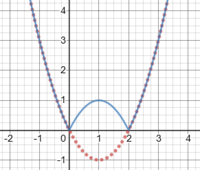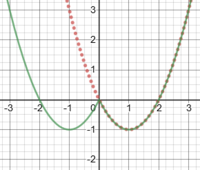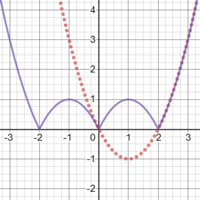"For example, maybe it really said that f(x) = -3x^2+24x-46, and asks you to graph |f(|x|)|; that is entirely different from what you wrote."
Yes, this is what I'm tryna do, sorry for the poor wording
Are you saying that I correctly guessed the original wording when I wrote
maybe it really said that f(x) = -3x^2+24x-46, and asks you to graph |f(|x|)| ?
That isn't the exact wording of the problem, which I asked for; so you haven't really answered me. I'll suppose it was this:
Given that f(x) = -3x2+24x-46, use reflections to graph the function |f(|x|)|.
I'll want to see what you have learned about the concept of absolute values in functions and how they represent (partial) reflections. Can you give it a try, or at least show what you were taught about graphing f(|x|) and |f(x)|?
What you might do to start is to graph f(x), marking some specific points, and then try graphing |f(x)|, ignoring the other absolute value for now. When we see what you do there, we can help you with the next step.
I'll give you an example with a simpler function. Here are the graphs of f(x) = (x-1)^2 - 1 in red dots, together with each of g(x) = |f(x)|, h(x) = f(|x|), and k(x) = |f(|x|)|:



Do you see how these work?



